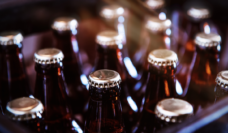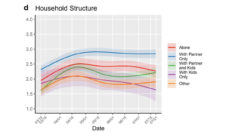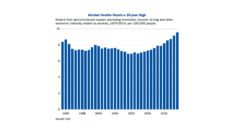Alcohol-related illness and death are rising among middle-aged adults. Alcohol use disorder puts people at risk for physical and mental health complications. Those experiencing alcohol use disorder might find, for example, that they drink more than they intended or struggle to stop drinking even when it causes problems in their relationships, daily life, and health. An estimated 5% of adults over age 50 meet the criteria for alcohol use disorder. We conducted a study to understand what happens when alcohol use in adolescence escalates to alcohol use disorder later in life. Understanding these trends can help social scientists and public health organizations plan when and how best to intervene and reduce the negative effects on people’s lives.
Most prior research on alcohol use across the lifespan has focused on the transition from adolescence to adulthood. There is evidence that nicotine, marijuana, and alcohol use during adolescence and young adulthood confer a risk for alcohol use disorder in the mid-30s. This is particularly concerning because adults today had high levels of underage alcohol use in their teens. For example, among adults currently in their 60s, 70% reported alcohol use in the past month and over 30% reported engaging in binge drinking when they were in high school. This begs the question: how does substance use in adolescence predict health into the 50s and beyond?
We conducted a longitudinal study to examine the potential associations of substance use during adolescence with alcohol use disorder in midlife. Using data from Monitoring the Future, we analyzed alcohol use trends among people who were seniors in high school in 1976-1987 and were surveyed again at ages 50, 55, and 60 between 2008 and 2019. We categorized respondents who reported at least two of the 11 clinical symptoms listed in the DSM-V as experiencing alcohol use disorder. These include spending a lot of time drinking or being sick, wanting a drink so badly they can’t think of anything else, cutting back on important activities in order to drink, and getting into dangerous situations during or after drinking.
We found that adolescent substance use may be a long-term risk factor for symptoms of alcohol use disorder in midlife. More specifically, alcohol, marijuana, or cigarette use at age 18 was associated with an increased risk of reporting alcohol use disorder symptoms at ages 50, 55, and 60. Being male and non-Hispanic White—as well as having a college education—were also associated with a greater risk of reporting alcohol use disorder symptoms in midlife.
Substance use disorders can have devastating effects. Our research findings emphasize how critical intervention is during adolescence and young adulthood. For example, interventions can help support youth by delaying the initiation or escalation of alcohol use.
Screening and intervention are particularly necessary during midlife to identify individuals with alcohol-related problems and refer them for treatment—but it is often unavailable. Some interventions have shown promise—especially among middle-aged men—and more research is needed to find ways to engage those who we identified as most-at-risk: men, non-Hispanic Whites, and people with a college education.
Our work helps us better understand what factors might put people more at risk for substance use disorder during midlife. This is an important first step in creating developmentally-appropriate preventions for adolescents and additional interventions for substance use for those in midlife and beyond.
The manuscript, Alcohol use disorder symptoms reported during midlife: Results from the Monitoring the Future Study among adults at modal ages 50, 55, and 60, was published in Substance Use & Misuse and authored by Megan E. Patrick, Yuk C. Pang, Bohyun Joy Jang, Brooke J. Arterberry, and Yvonne M. Terry-McElrath. The research was supported by the National Institute on Drug Abuse and the National Institute on Alcohol Abuse and Alcoholism.
Photo via Getty Images















